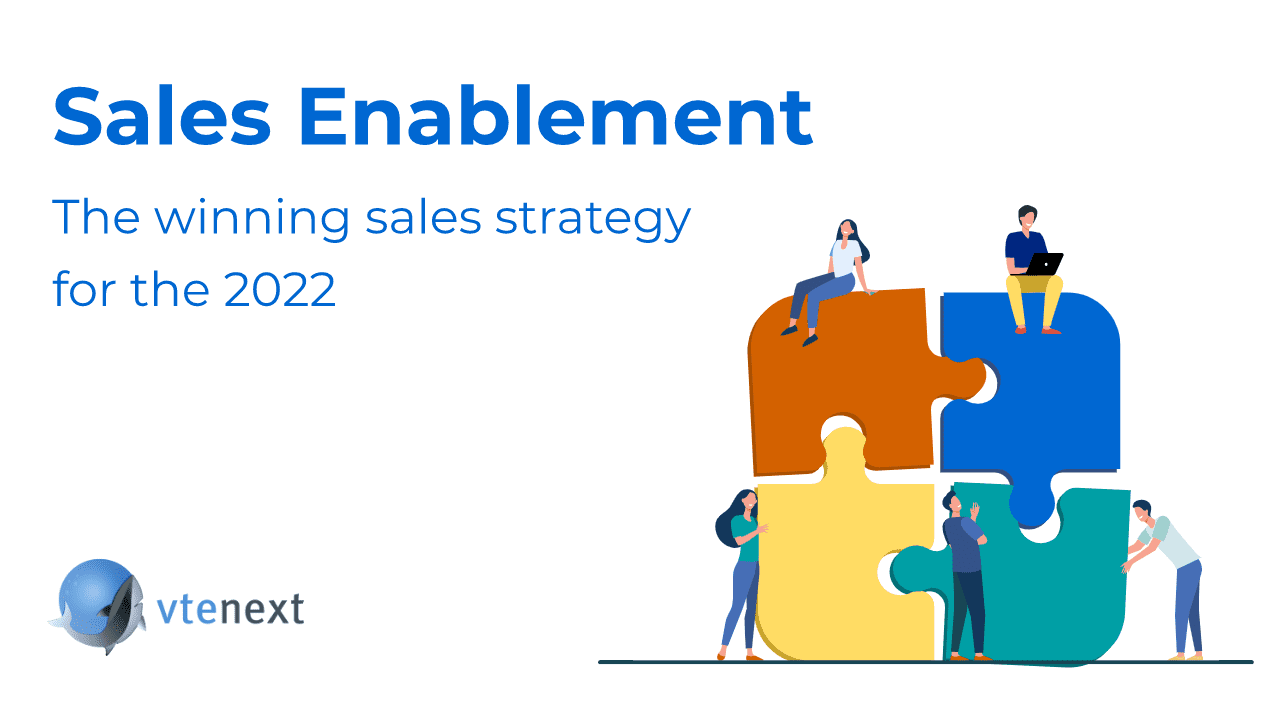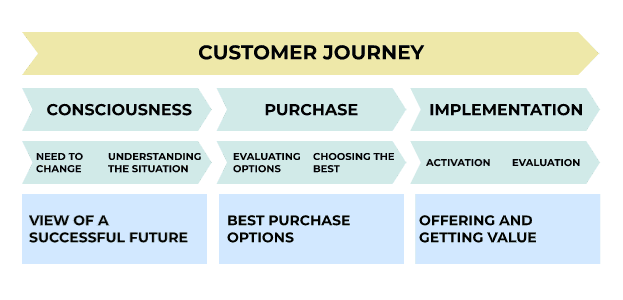Selling in B2B and B2C markets has become difficult.
Customer behaviors are deeply changed: the way companies and consumers get in touch changed, but also the consumers’ level of information became higher.
In the article we talk about Digital Customer Service and CRM and we underlined how the digitization process we lived during the last two years brough customers to have higher customer experience expectations.
Consumers of any age have access to digital services and they pretend:
- websites and apps well designed, easy to use and safe: 88% of the users declared that they have less chances to visit again a website or an app after a bad experience with the customer service
- a customized experience with brands, considering their higher sensibility and attention to how they spend their money
- a better customer service: user rewards companies which make them save time and effort, leaving the ones that make them lose time and which ask a bigger effort to solve problems.
Buying processes are becoming less linear and more omnichannel, in order to include both physical and digital channels.
All of these elements influence the business practices, especially in the B2B market, and make it more and more difficult for the sales managers to reach their sales goals.
Companies need their sales managers to be more productive, competent and able to reach their goals. That’s why, many companies started investing in Sales Enablement.
Sales Enablement: what is it?
You can find different definitions of Sales Enablement. Somebody thinks that is about a technology injection within sales processes. Someone else thinks it’s about their efficiency.
We decided to choose the Professor Silvio Cardinali’s definition. He is Associate professor of Marketing and Sales Management at the Polytechnic University of Marche.
Sales Enablement is a framework and a new way to read sales processes which allows companies to satisfy their increasing needs.
The attitude is to answer to this complexity with linear sales processes. In this article we identified the steps which compose a sale negotiation, from the beginning to the end: lead generation, first contact, appointment, offer, follow-up, closing.
When something goes wrong during the negotiation it doesn’t mean that the tools you are using are wrong. It means that you aren’t managing the complexity with the correct approach.
A first step to completely embrace the Sales Enablement is to accept the effort required by the complexity.
How does the Sales Enablement work?
A key concept linked to the Sales Enablement is the Customer Status. We usually focus on the customer’s profile, overlooking the variables connected to time and decisional processes which make less reputable the ways through which the customer get in touch with our products or services.
The scheme shows the buying process from the customer’s point of view, also known as Customer Journey, which is composed by three phases:
1- Consciousness: comes from the need of a change and brings to the situation understanding
2- Buying: the customer evaluates the different options and chooses the best one
3- Implementation: the customer activates the service, tries the product and evaluates it.
To manage the complexity it is not enough to deeply know the customer’s profile. Each sales manager must be able to understand in which phase of the Customer Journey he is, and act accordingly.
If the customer is in the exploratory phase, we would only lose our time if we’d start talking about technical characteristics or prices,
The right question would be: is our product category suitable to solve the customer’s problems?
We need to redefine our sales processes and understand which tools to use in each phase: which materials, information, content.
The Sales Enablement philosophy sees sales not as a linear, schematic, ordered process, but as a support to the customer in the product choice and purchase, accompanying him through the following phases of the Customer Journey.
The Sales Enablement 4 elements
An effective Sales Enablement strategy is based on four main transformation drivers.
The Sales Enablement processes can be enhanced through a correct technology use. Sure, you can choose between thousands of different technologies: how to choose the most useful for the sales processes empowerment from the customers’ and Sales Enablement’s point of view?
Don’t forget that the adoption of a technology isn’t enough, by itself, to make the technology really useful. To improve productivity it is necessary for the technology to be infused within the company’s processes, as it happens with a CRM.
Through an integrated CRM, it is possible to have a more customer-centric sales process, having clear their position during the Customer Journey.
With a CRM your company:
- manages data automatically: improving access to information, salesmen can reduce the sales cycle duration
- better time management: thanks to a better time organization, the salesmen’s productivity can increase
- increases conversions: better data access and time management means a better conversion rate
- develops the customer retention: if you know and understand your customer’s needs you can keep long-term constant relationships.
Thanks to the Sales Enablement it is a must to think about performances. Sales cannot be measured only through results, rewarding those who sell more, but it has to be efficient, with a correct acquisition cost.
How to make sales more efficient?
- improving the time management (decreasing negotiation time and optimizing travels)
- eliminating the low-value added activities
- generating more qualified leads
- supplying customer quality content, able to convince him fastly.
Competences requested by companies to those who manage the sales processes are often connected to the correct choice of the sales manager.
By the way, many team’s competences are not compatible with the sales transformation: there are no predisposition to the change and specific competences able to guide the real transformation.
In short: the “one-man-show” era has come to an end. Each person has to be able to be part of a team. And, obviously, put in the conditions to do that, through training and periodical coaching.
Redesign processes and rethink it in a customer-centric way is a really important aspect for the Sales Enablement. Mapping interactions with customers, listening to their voice and analyzing their feedback is very important in order to supervise business processes.
Conclusion
Changing the sales approach is the only way to successfully manage the deep changings which are involving companies and consumers.
Embracing complexity, changing the way we think, helping the customer in each phase of the Customer Journey are fundamental elements.
How to do it? Implementing the 4 transformation drivers through the Sales Enablement: technology, performance rethink, team and process supervision.

